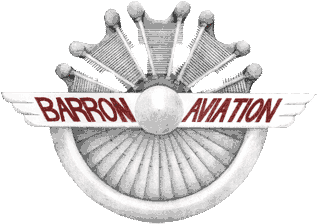Corrosion Treatment
Corrosion is the main concern with old airframes. This is especially true for planes that have been disassembled and stored, neglected, or have lived in saltwater affected areas. While we have seen some cases of severe “natural” corrosion, the real threat is coming from improper paint stripping. The stripper that is not properly removed from the lap joints and then neutralized is highly corrosive to aluminum structures. Once this dries it is very difficult to remove and often requires splitting the seams to physically remove the stripper and corrosion salts. This is expensive!
We do a lot of corrosion treatment as well as prevention. Treating existing corrosion requires anything from an anti-corrosion fog treatment for very light surface corrosion to acid removal of corrosion salts followed by a permanent corrosion barrier application. Barron Aviation has a very aggressive approach to corrosion control and while an aircraft is being restored is definately the time to address these issues. With todays materials it is possible to prevent all future corrosion on any airplane.
For more detailed information on this subject visit our Corrosion page under Maintenance & Technical Information.
BOESHIELD T-9 CORROSION INHIBITOR FOR AIRCRAFT
Corrosion control is a very important factor in prolonging the service life of airplanes. A significant advance in corrosion-inhibiting compounds has been made by The Boeing Company
Developed by Boeing’s Materials Technology Laboratories, BOESHIELD T-9 is effective because of its excellent water displacement, penetration and protective film development. The resulting coating will out last competitive treatments and exhibits excellent results in salt spray exposure, “EXCO” immersion, and dielectric current tests. BOESHIELD T-9 also meets all flammability requirements of Federal Aviation Regulation 25-32 after the solvents have evaporated, and is effective from -40 to 250 F
BOESHIELD T-9 has a mineral spirits base and can be easily sprayed with a variety of equipment. All that is necessary is enough pressure and nozzle size to form a mist. Simply wet the surface and the desired coating will form after 5 to 7 days of drying. Excessive spraying will only increase puddling and extend drying time.
Once the surface BOESHIELD T-9 has excellent penetrating and moisture displacing properties. Using capillary action it will cut through and stop existing corrosion, find its way into lap joints, seams, and around rivets, and eventually weep out the exterior. However, this activity stops after a limited time (usually 5 to 7 days depending on temperature and humidity) at which point a waxy film develops in all areas. In this way, the coating will stay put for much longer than the all-liquid treatments, eliminating the continual weepage and cosmetic problems associated with them. When reapplication is necessary (usually 3-5 years depending on service and exposure) the existing coating will be re-liquefied and resume its penetration and weepage, again only for a limited period.
BOESHIELD T-9 also is non-conductive and will not cause short circuits in electrical systems. However care must be take to keep it away from areas where point contact is required, such as key pads on electronics.
As mentioned previously BOESHIELD T-9 has a mineral spirits base and contains no harsh solvents such as MEK or Trichlor Ethylene. Therefore it is safe to use around most paints, plastics, vinyl’s, wiring, and many glues. It is very effective for rust proofing steel tubing on fabric covered aircraft but should be tested on the exterior skin prior to application to insure no degradation of the material or lap joints takes place.
We have performed our own in-house tests and have been very pleased with this product. Since we have started using this product three years ago, we have seen that the weeping does not continue for the life of the product and the coating inside the airframe remains intact.
For the next topic click the title below

